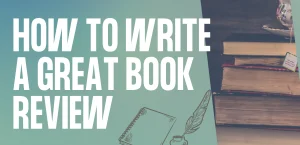
Home » How To Write An Autobiography With No Experience
How To Write An Autobiography With No Experience
Let the world know your story as it deserves to be told. There are millions of ways to narrate your story and tell the world about it. However, as thrilling as it sounds, it is also terrifying at the same time. But don’t let your fear take over you.
You are the best narrator of your story, giving you an upper hand in writing your life autobiography. As a writer, you hold the power and the skill to portray your life story in an inspirational way. However, even if you haven’t written an autobiography before, our article will offer a step-by-step guide to get you started.
TABLE OF CONTENTS
What Is an Autobiography?
Difference Between Autobiography and Biography?
Difference Between Memoir and Autography?
6 Important Tips for Autobiography
How to Write an Autobiography in Easy 8 Steps
What to Include in Your Autobiography?
The Advantages of Writing Your Life Story
WHAT IS AN AUTOBIOGRAPHY?
An autobiography is a non-fictional story of an individual’s life. It is written and narrated by the person. Autobiographies are a great way to tell your life story to the general public audience. The first known autobiography was written by Margery Kempe (c.1373 – after 1438), an English Christian mystic known through the dictation of “The Book of Margery Kempe.”
Dreaming of Writing a Best-Selling Novel? Let's Make It Happen!
WHAT IS THE DIFFERENCE BETWEEN AUTOBIOGRAPHY AND BIOGRAPHY?
An autobiography is a person’s story written by themselves, whereas a biography is a person’s life history written by someone else. This is why biography writers are extensively famous and have their names published on the biographies.
DIFFERENCE BETWEEN MEMOIR AND AUTOGRAPHY?
A memoir is a non-fictional story where the author shares glimpses from a particular period or highlights some themed moments throughout their life. At the same time, an autobiography focuses on facts and historical events from beginning to end.
5 IMPORTANT TIPS OF AUTOBIOGRAPHY
An autobiography includes the essential details of your life, but it does not mean you put every tiny silver of minutiae in it. What you can do to write a self-aware autobiography is to pen down all the inspirational moments for your readers and make a list of what you want to tell the world in your autobiography.
STEP#1: A DESCRIPTION OF YOUR ORIGIN STORY
In step 1, you can add your hometown, family history, family tree, and loved ones and briefly introduce your education and working history. This would allow your readers to know more about you.
STEP#2: EXTENSIVE EXPERIENCE
Most readers who purchase your autobiographies will seek motivation from your life story. So, add your struggles. Tell them about every experience you had in your life. What are you currently doing, and what approach have you had throughout your life? Write everything down.
STEP#3 WORTHFUL RECOLLECTIONS
Not all memories of the workplace are positive. Some are negative, and some embarrass you, but don’t exclude them. Those could be turning points for your autobiographies. There may be a reader who could feel connected with your recollections and pay extra attention and focus on your book. Who knows, they might even recommend your book to another reader. This is why add everything necessary.
STEP#4 FAILURES
We all have been there and done that. Failures are what make us stronger for our subsequent battles. Add your failures and let the world know how you fought those battles and won from them.
STEP#5 COMPELLING TITLE
Your book title is what brings the crowd to you. Do not go for titles such as “My life story” or “My autobiography?” “The story of my life, my family, or famous people I know,” and so on. You must be wondering what the title should be. Let us give you a few examples,
Here are five most famous autobiographies written by world-inspiring people,
- My Life (2004) by Bill Clinton.
- An Autobiography (1974) by Angela Davis.
- I am Malala (2013) by Malala Yousafzai.
- Finding My Virginity (2017) by Richard Branson.
- My Life on the Road (2015) by Gloria Steinem.
STEP#6 USE FIRST-PERSON NARRATIVE TONE
In a traditional autobiography, a third-person narrative is okay; however, the third-person tone is presumptuous in the autobiography. Opt for a first-person narrative to connect with your readers.
HOW TO WRITE AN AUTOBIOGRAPHY IN EASY 8 STEPS
We all have life stories worth sharing, but having the courage to pen down those memories is tough. You are writing your first job, your first kiss, your first failure, and many first-time events. The recollections could haunt you as you write the events and interest your readers through them. Some of us may feel overwhelmed with the recollections of our lives. It is why most writers opt for professional autobiography writing services who are skilled enough to write their story the way they would write it down. You only have to talk; they will write wonders for you. But if you think you are enthusiastic and can take the challenge of writing your life story, let’s do it in eight simple steps.
BRAINSTORM
We brainstorm about the writing procedure before writing anything on a blank piece of paper. This is what you have to do before writing your autobiography. Think about all your life experiences and note those that interest your readers. Cover all eras in your life – from your childhood to high school and your first job to the latest episodes of your life. Prepare a first draft and write what you feel your readers should know. Most of the content you add in your first draft wouldn’t be there in the final draft. But write down everything.
OUTLINE
Brainstorming is what you do before starting to write. Crafting an outline helps you organize your work before you get started on the actual journey. Placing your life’s memorable events throughout the book would help you grab your reader’s attention from the beginning to the end. This is similar to a novel outline.
RESEARCH
Once you have outlined your autobiography, it’s time to research. You must be wondering why you would research your own life story. You added everything you thought would interest your readers in your first draft. When you research what you have written, it will help you eliminate things that aren’t motivational. Every word written in your autobiography should be interesting. Recall details from the moments you are writing from. Talk with your family, friends, or people connected with those moments. It’s okay not to be able to remember it all. No one can know the complete history of their entire life, especially the childhood moments, incidents, or mishaps. So, do some cultural research as well.
WRITE YOUR FIRST DRAFT
Once you have written all the moments that could anchor your story, it is time to make the first draft ready. It could be scattered, overloaded with details, or roughly written. This is where you could get help from professional autobiography writers. They hold the experience to yield a final draft from a long-winded one.
TAKE A BREAK
We all get excited when it’s about writing our life story. We are enthusiastic and energetic to write as much as we can. But remember to take a break. You want to read your written work with a fresh mind. Take a break and remove yourself from this procedure for some days. Or hire an expert biography writer to recheck your work and read for missing ends.
PROOF-READ
Once you have completed writing and finalized your drafts, do not be overconfident and go for publishing. But wait and get a second eye. Not practically but metaphorically. Proofread what you wrote. You could highlight grammatical errors, weak sentence structure, and weak moments that break the reader’s interest or first-tone narrative. When you proofread, you will encounter multiple mistakes, and it is necessary to fix them and then opt for someone who could read it for you.
THE NEXT DRAFT
When you make an outline, you divide your life story into chapters. Each draft is a chapter. Once you finish the first draft, dive into the second one. Write in the same way as the first one. Once completed, show it to your close friends and family. Or hire a professional editor and proofreader who could give you an expert opinion.
REFINE WRITING
As a writer, we understand that you must maintain a neutral tone. If you think your writing style is very casual, you could take assistance from new people. Refine your writing by taking advice from people who read your drafts. It is always a good idea to share. Your final draft aligned with all the chapters would be much different than the first one you wrote. If you do not have anyone to proofread or refine it for you. Hire ebook ghostwriters who are professionals and can offer you impeccable service at reasonable prices. Are you still not sure what to include in your Autobiography? Let us give you a brief explanation about what you can include in your autobiography.
WHAT TO INCLUDE IN YOUR AUTOBIOGRAPHY?
Similar to an essay, an autobiography should have three primary stages: introduction, body, and conclusion.
INTRODUCTION
The introduction contains content that introduces the reader to your topic, presents your concept, and captivates the reader’s attention. You need to engage them in reading your autobiography and add anything interesting.
TIP: One of the best-proven ways to make introductions enjoyable is to outline your general image and make a strong statement that motivates the readers to continue reading.
BODY
The body is the middle part of your autobiography. It tells your story. This part unveils your life story and main events. In this part, you have to focus on three things. The first is well-structured, the second is steer-clear, and the third is logical. Let us explain briefly.
TIP: One of the most exciting ways to engage your reader with your book is to add interesting and inspirational life events in the middle part. But do not throw all the climaxes; save some for the ending.
Well-structured: Every paragraph focuses on a particular moment or time.
Steer-clear: Your content should be easy to understand. Do not use a high English vocabulary, which would be difficult to read by hard-cover readers. As on eBook platforms, users can search for words that seem difficult.
Logical: Make sense of what you are writing in your autobiography. It is indispensable to offer facts in a rational way and a well-written sentence structure in every paragraph.
CONCLUSION
An introduction is what engages the readers in your book. But the conclusion drops lasting impression. If you want to know how to make an excellent ending for your autobiography, think about writing the lessons you had and how they influenced your life in the existing stage. Do not prolong the conclusions; keep it straightforward and leave a motivational lesson for the readers.
TIP: Do not bore the readers by prolonging your content. Leave a clear motivational lesson for the readers. Imagine watching a movie and seeing an inspiring scene at the end; this is the same thing you must offer your readers in your autobiography. Add the “WOW factor.”
THE ADVANTAGES OF WRITING YOUR LIFE STORY
We often reach the final stage and doubt whether our story is worth sharing. Please know that there are millions of readers surfing online to purchase their next inspirational autobiography. Here are a few good reasons you should write your autobiography without a doubt.
- 1- MAKE YOUR PLACE
Your autobiography will be passed on to multiple generations. Even if it is your first time writing an autobiography, it can still reach a higher audience. Most writers drop a legacy in their family history that is humbler in scope and has a lasting impression. Life events written cannot be eliminated. Your story is a great way to tell the world how you have fought the most complex battles of your life alone and offer hope to others. - 2- REFLECT LIFE LESSON
An autobiography lets you know more about yourself. It permits you to indulge in your experiences and recall how you’ve lived your entire life. Self-knowledge creates, whereas the adventures get a clear vision. It’s an excellent window for self-exploration. - 3- POWERFUL TOOL FOR THERAPY
Writing an autobiography includes examining their inner feelings at multiple points in their lives. However, writing an autobiography offers a look-back on the author’s life with the advantages of retrospect. - 4- A NEW DIRECTION
An autobiography offers the author a chance to look at their life goals. Encouraging the readers to evaluate their own. It helps individuals know the meaning of their lives. We may feel frustratingly disjointed at some point in our lives, but writing our autobiography could connect us with good memories and revise our life goals. Thus, offering a new direction for your next project.
THE VERGE
Many individuals are not interested in reading other people’s lives, but autobiographies are a great way to tell your life stories to others. Make it interesting, humorous, and captivating till the end. Do not overshare, over-clutter, or mix up events. Connect each chapter. Some autobiographies are written to pass on to the next generation, so make sure what you write leaves a family legacy behind and offers an excellent direction for the upcoming generation. Focus on creativity if you are writing for the world to know your life story. No matter the reason, if you are determined that your book can impress others, then don’t let any doubt stop you from writing.
Hopefully, you are ready and confident about writing an autobiography with no experience. All it demands is to pen it down.
Ready to Write Your Best-Selling Masterpiece?
Related Posts

The Simplest Way to Get an ISBN Number as a Self-Published Author
As a self-publishing author, it is important that you know how to get an ISBN number. You can get your own ISBN barcode for your book by purchasing it from

Top 10 Best Book Publishing Companies in 2024
It is a desire of every writer to be published someday. It is natural to want this recognition after spending many months, even years, for some people, writing a book.

Best Book Formatting Software and Tools for Paperbacks
Writing your book and finishing that final draft is therapeutic. But getting it published is a headache for most writers.When you self-publish, it is usual for writers to keep in

ISBN vs ASIN: Which One to Choose
You’ve finished writing and editing your dream book. Now what? It is time for you to hit that exciting publish button and share your story with the world. But it

Top 10 Best Book Publishing Companies
Introductionwrite a book It is a desire of every writer to be published someday. It is natural to want this recognition after spending many months, even years, for some people,

Best Practices For Writing Book Reviews
In the age of information overload, where countless books flood the market every day, the importance of a well-written book review cannot be overstated. Book reviews play a crucial role
